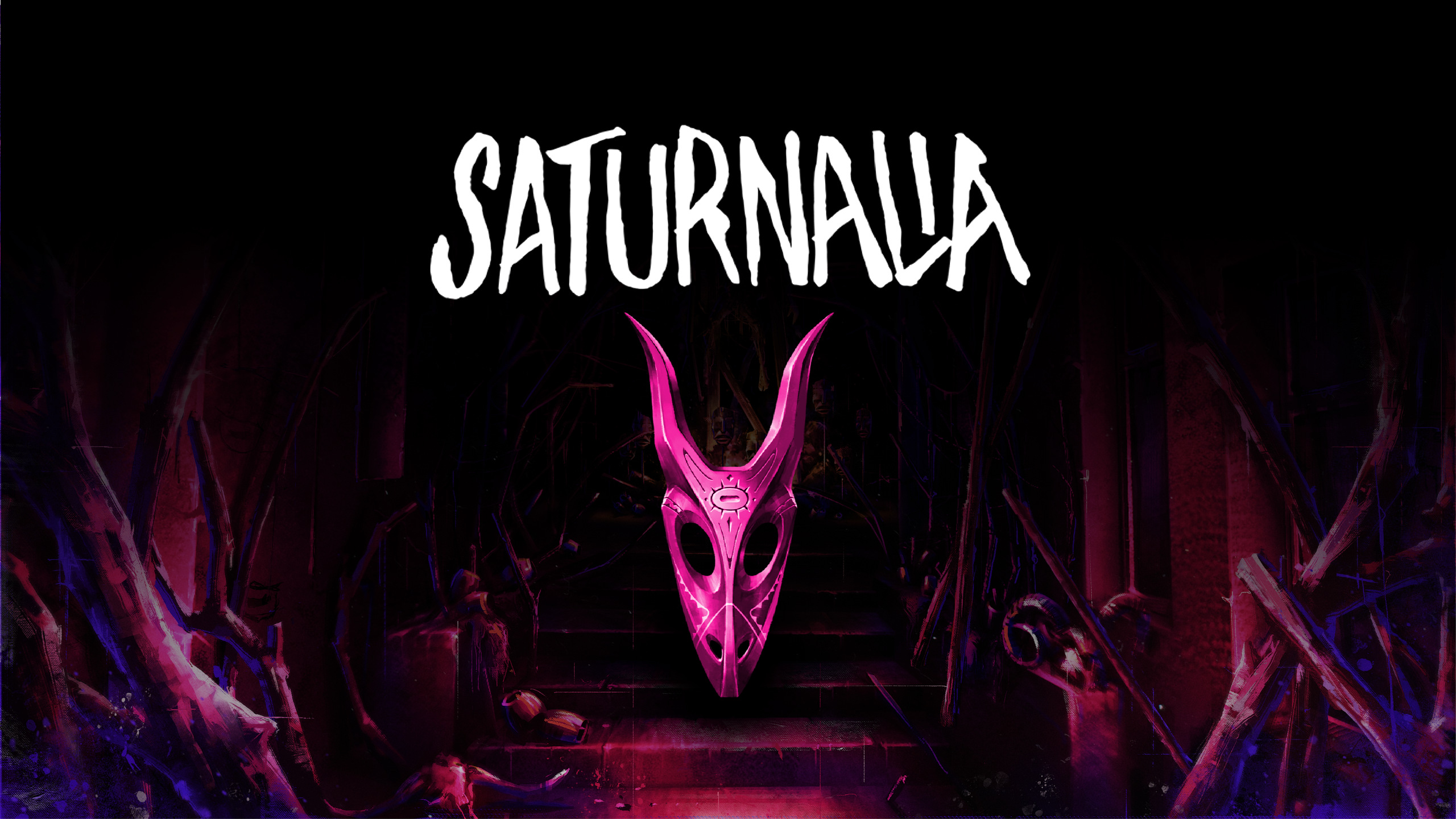There’s ultimately always one conundrum every horror game faces: how do you keep your terror experience from losing its edge once people have experienced your carefully curated scares for the first time. From Resident Evil to PT to Outlast and Condemned, it’s a fundamental flaw that’s undercut the fear of even the biggest horror games. Saturnalia may just have found the solution.
When I previewed Saturnalia back in August, I’d approached it with little to no knowledge of its core premise other than it was another horror inspired title. What I played then impressed me, particularly with how it promised to try and solve this fatal issue. I had a couple of minor faults that I hoped would be ironed out come release, which I’m pleased to report they certainly were.
Yet, booting up Saturnalia again, 2 months later, I was awe-struck by just how incredibly well designed, thought out and impeccably structured this game truly is. I was just as on edge and nervy by my 6th hour as I was my first, perhaps even more so. Saturnalia has gone from a hotly anticipated game, to one of my favourite horror titles ever. It’s a bold claim, I know, but reach with me into the depths of this disturbed Italian town and discover the nightmarish truth for yourself.
The Walls Are Closing Twisting In
If I’m going to justify my bold opening, I might as well start with the crown of this horrifically brilliant experience. The true demonic force of Saturnalia isn’t the creature that stalks and hounds you throughout your time surviving this hellish village. Oh no, the real antagonist is the village.
See, Saturnalia incorporates roguelike elements into the core gameplay, which means that every time you start a new game, or your group of characters is killed by the ethereal creature, it resets. The town will contort, moving buildings, switching up streets, changing alleyways and even shortcuts.
On my main playthrough this time around, I wondered out, muscle memory from 2 months ago well and truly intact… to find that alley that definitely didn’t lead to a dead end before absolutely led me to a dead end. Brilliant. All of that knowledge, carefully built up over 4 hours – gone.
Being stalked by a creature you can’t fight is bad enough, as Alien: Isolation proved. Being harassed by said creature when the purposely claustrophic, tightly-woven and intentionally obtuse town paths completely change from what you previously knew? That’s devilishly horrific. I freaking love it.
This one incredibly creative use of another genre’s mechanic makes Saturnalia feel fresh every time you fail. No longer will knowledge, muscle memory or spatial navigation reduce the sense of dread. Even when you get accustomed to the creature itself, the town will throw you a new dead end, or a path that no longer acts as a shortcut, and suddenly all that vulnerability returns.
I played 3 runs of Saturnalia by the time I wrote this review, when I started my 4th, the town hall was on the opposite end of the safehouse villa compared to my other two runs (not including the preview). The thought of having to navigate across the town to get there repeatedly still caused me to feel nervous. Saturnalia may not completely solve the ultimate problem of experience overcoming horror, but its rendition of Sardinia does a damn fine job of coming closer than most.
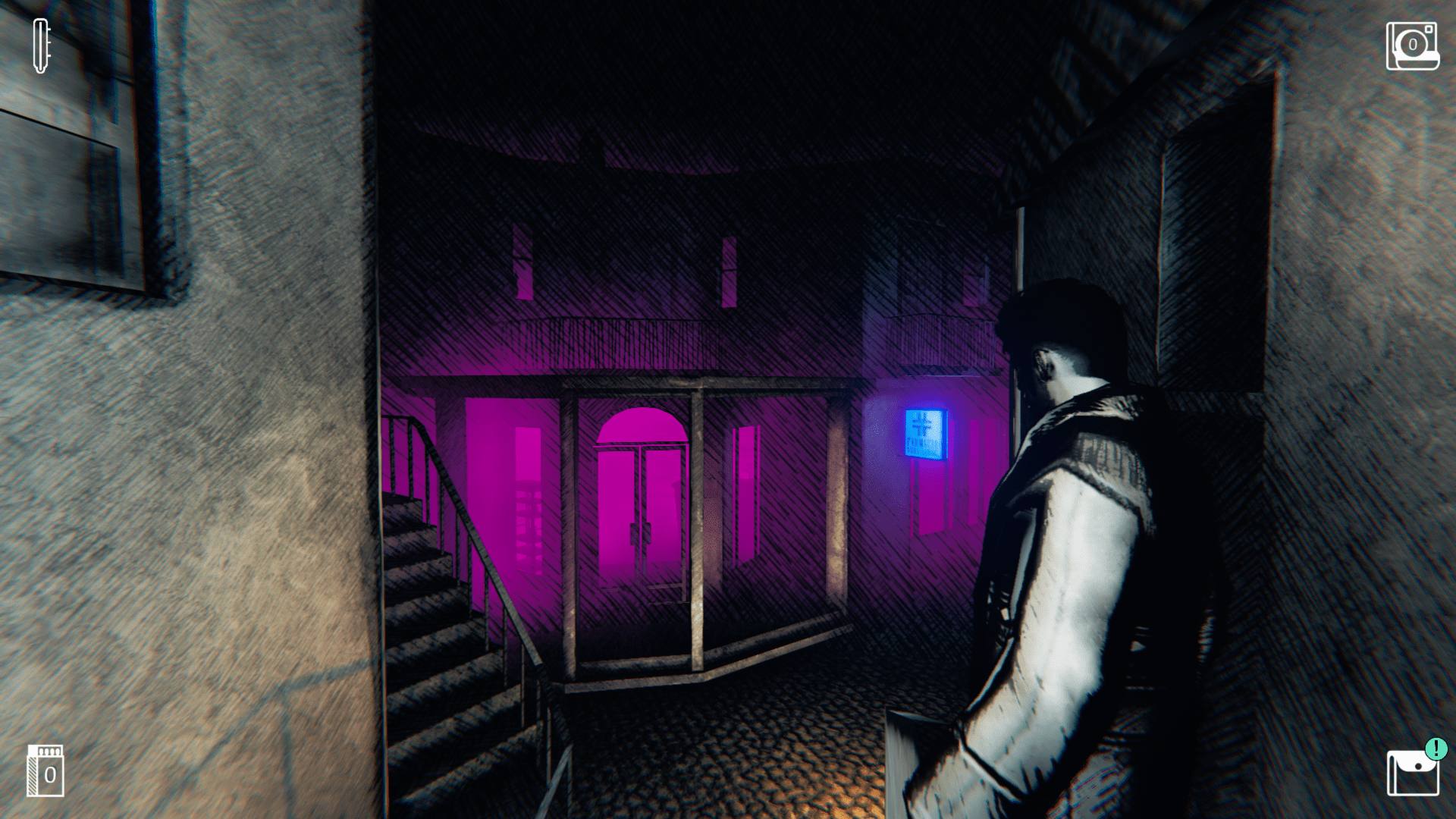
If It Wasn’t For Those Meddling Kids…
The core of Saturnalia is the 4 primary protagonists, each of which are playable and have their own unique abilities you’ll need to uncover the twisted mystery of the town itself.
Gravoi is the name of the place. It’s filled with townspeople creeping through its dark, narrow corridors. It’s also home to the Winter Soulstice Festivals, hence the name Saturnalia. Due to this, our cast of young, naive people arrive to the town, each with their own motivations and stories to uncover.
From the off, it’s very clear things are… disturbingly uncomfortable in the village. People refuse to speak with you, lock their doors and ignore your calls. Our group are comprised of Anita, Paul, Sergio and Claudia. Anita has returned to confront her would-be baby daddy (who’s coincidentally married to someone else), Paul is investigating his father’s disappearance, Sergio to look after his ill father and Claudia is… well, I’ll leave you to discover her story yourself.
There’s a lot of dark and disturbing stuff going on, suffice it to say. However, despite all the dialogue being non-verbal and text based, it’s surprisingly engrossing. As you uncover clues around the village and interact with this thoroughly messed up place, you’ll organically start piecing together the overall narrative that’s caused this accursed plague.
Mostly impressively, you can navigate and complete questlines in almost any order – meaning the dialogue you experience will be different depending on what clues and questlines you’ve already found up to that point. My preview playthrough and 1st proper playthrough were handled completely differently (I actually found Claudia this time…) and the game adapts to whatever order you accomplish things, which is really cool.
Each character’s questline is significant to fill out their backstory and each has a satisfying conclusion, should you see them through to the end. Mind you, you don’t have to, so you could alternatively leave their stories unfulfilled and unknown, then who’s the real monster? There’s enough guidance and hints on normal difficulty to help you make sense of the story, but the real intrigue comes from getting immersed in all the notes, items and lore expositions you’ll uncover in your search.
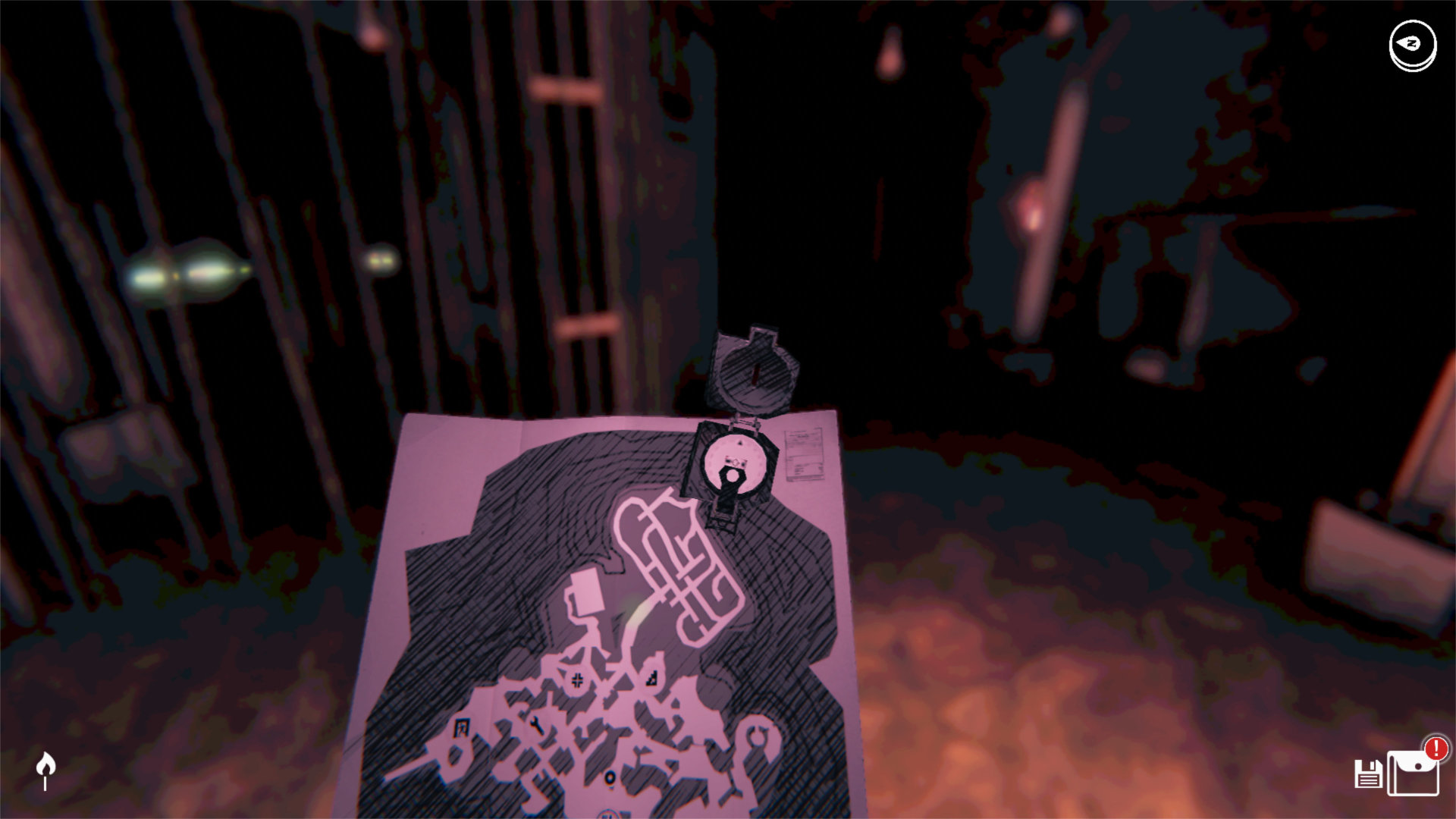
Safety In Matches
In order to actually discover the origins of the village’s fate, you’ll need to venture out to its various landmarks to find clues, gather tools to unlock new areas and interact with the couple of creepy locals still lurking around its corners.
To help you keep track of what you’re doing, there’s a handy page which tracks each character and named person of interest, with flow chart lines which connect to locations, notes and items relating to their quests. It’s a slick system and even more satisfying as you watch the page fill out with your gathered knowledge. The page provides just enough in terms of structure and direction to keep you moving, while not spoiling the overarching narrative or handholding you too closely.
Wandering out initially as Anita and Paul, you can further unlock Sergio and Claudia through exploration. To this end, you’ll need to carefully walk or daringly sprint through the village, visiting the named locations like the pharmacy, mines, bar or castle to interact with objects and find clues. Some locations may be barred to your entry, requiring a tool or a particular character to get inside, for example.
So begins the satisfying loop of gameplay. You venture out on a mission to progress a certain quest, only to find your progress blocked by a window needing to be smashed, or a door requiring a solder to open. You’ll have already found a couple of hints in this place, opening new threads in your flowchart to follow, so you soldier forth to gather the tool you need or get side-tracked on the way, which happens a lot.
Gravoi is devastatingly dark, making your journey to and from those places much more arduous, and fear-inducing. You’ll need to use matches to light your way, igniting fires along your route to mark your already trodden path like a breadcrumb trail. At random intervals, or if you make too much noise sprinting about, the creature will appear. Oh sweet lord have mercy, is this creature terrifying and progress halting.
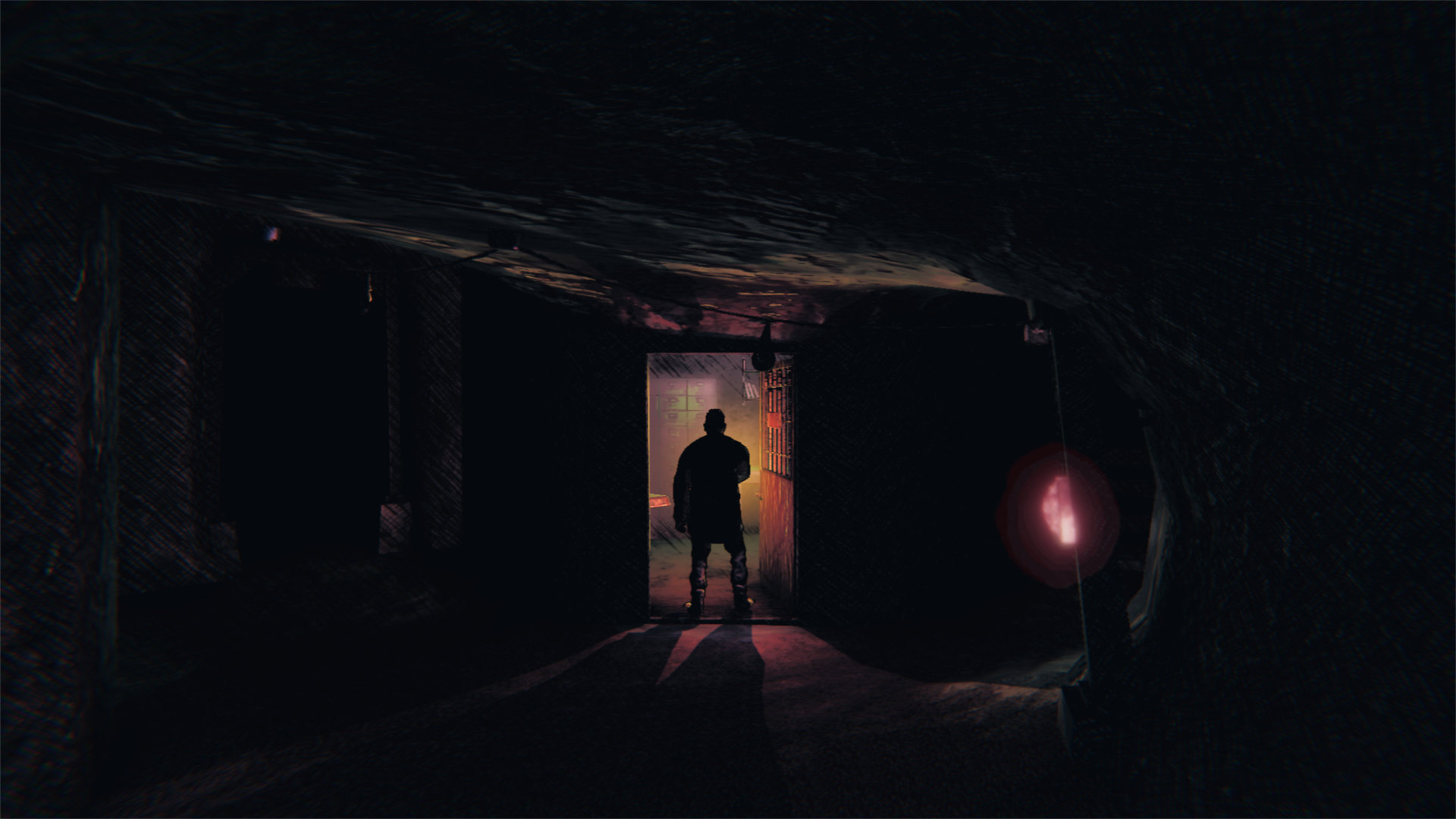
Do Not Face Your Demons
Any action you engage with around Gravoi risks the creature becoming aware of your presence and trust me when I say you really, really, don’t want that to happen.
What Saturnalia gets so right about the spectral creature that stalks you is the subtle ways it becomes increasingly threatening the more clues you discover. Initially, the faint shaking sound of its presence will put you on alert, but it might be easily outran or hidden from. By hour 4 or 5 though, it could extinguish fires I’d lit around the village, plunging me into darkness. It could disrupt light sources and most distressingly, the deafening audio of its presence becomes even more pronounced.
I won’t spoil any other surprises it has up its shadowy sleeve, that’s for you to have nightmares about on your own. But, the fact you can’t fight it and running from it becomes gradually more terrifying ensures you never grow into a comfortable lull, this thing will have you on edge and nervous throughout. You’ll want to go out to find out more of the story, but you’ll hate yourself for leaving the security of the villa.
However, you’re not completely helpless against Gravoi’s cursed apparition. Paul’s ability for example allows him a one-shot stun on the creature should it get too close by using the flash of his camera, making him indispensible as a group member (losing him in my preview was a tough blow). You can also find or purchase firecrackers to throw into bins for distraction or sodas to boost your stamina to out-marathon the petrifying thing.
Consumables are largely limited, including matches, making them invaluable in a pinch. Getting more of them might involve smashing a coin dispenser to use at vending machines that provide them, at the risk of setting off an alarm bringing more attention. It’s a constant risk-reward system that has you querying if an extra one-shot stun or pack of matches is worth the ire of the fiend.
Their limited availability makes traversing certain areas or the late-game village genuinely horrific and adrenaline-pumping. The mines in Gravoi are a prime example of heinously excellent game design. A labyrinth of winding tunnels and pitch-black voids, it’s supremely nerve-shredding to navigate, especially with the creature at your heels. If you run out of matches down there, you can’t even traverse it anymore, as characters lose their cool in their depths of the dark, so you have to manage your resources efficiently.
Even come the end, the prospect of going into the mines filled me with utter dread. Trust me when I tell you, you’ll have to enter them a lot. None of which you’ll be pleased about.
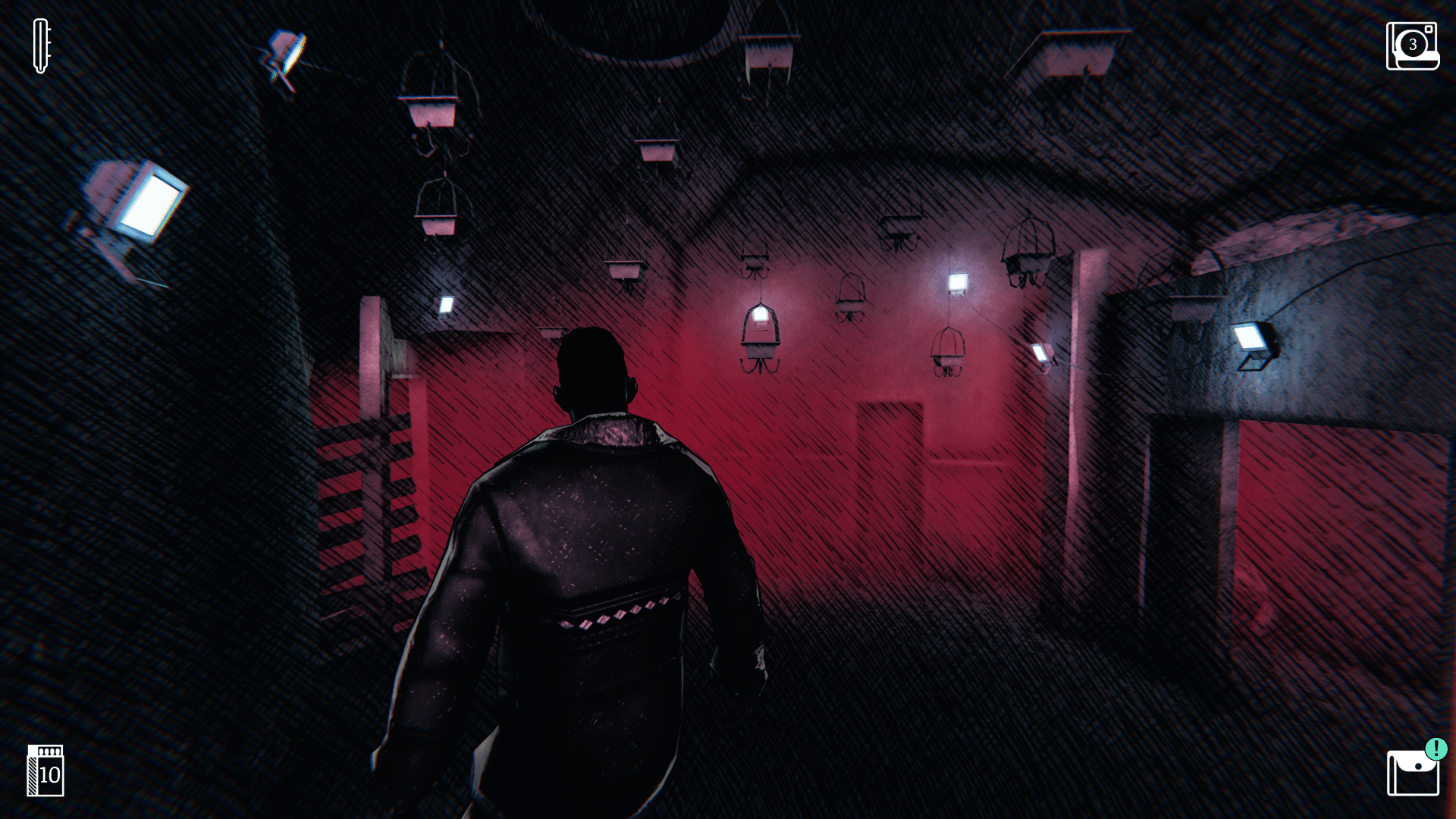
Terror In Watercolour
Losing your party to the creature not only means the village contorting into an entirely different structure, it also means the loss of consumable items and tools. If you didn’t open that location or shortcut before they kicked the bucket, you’ll have to seek them out again to progress.
Saturnalia does have one constant throughout your terrifying trip to Italy however: its superb graphical art style. Saturnalia uses an almost watercolour aesthetic with what comes across as an artist’s sketch level of detail. Little scratch marks fill out the background, lines of detail will shimmer and flow all around you. It’s one of the most unique and distinct art styles I’ve come across and it’s used to fantastic effect.
Instead of an awareness meter for the creature for example, the town will be blanketed in a colourful purple fog. The more noise you make, the deeper the colour gets. Safe areas have the fog turn yellow to provide a soothing mark. Use of colour, and the lack of it, helps distinguish Saturnalia brilliantly, elevating the sense of dread and suspense as you try and survive.
The town itself and the various landmarks have an abundance of little details and architectural quirks that show off all of the on-site research the developers clearly took inspiration from. I found myself just so impressed with the fact that the structural design of the zigzag jagged streets could look so good when the village can be twisted in so many different ways.
Saturnalia looks fantastic, basically. Aside from the odd visual glitch I came across (like a rogue pink polygon hanging in mid-air), it kept me immersed throughout my playthroughs and it’ll stay in my memory as a unique experience for a long, long time.
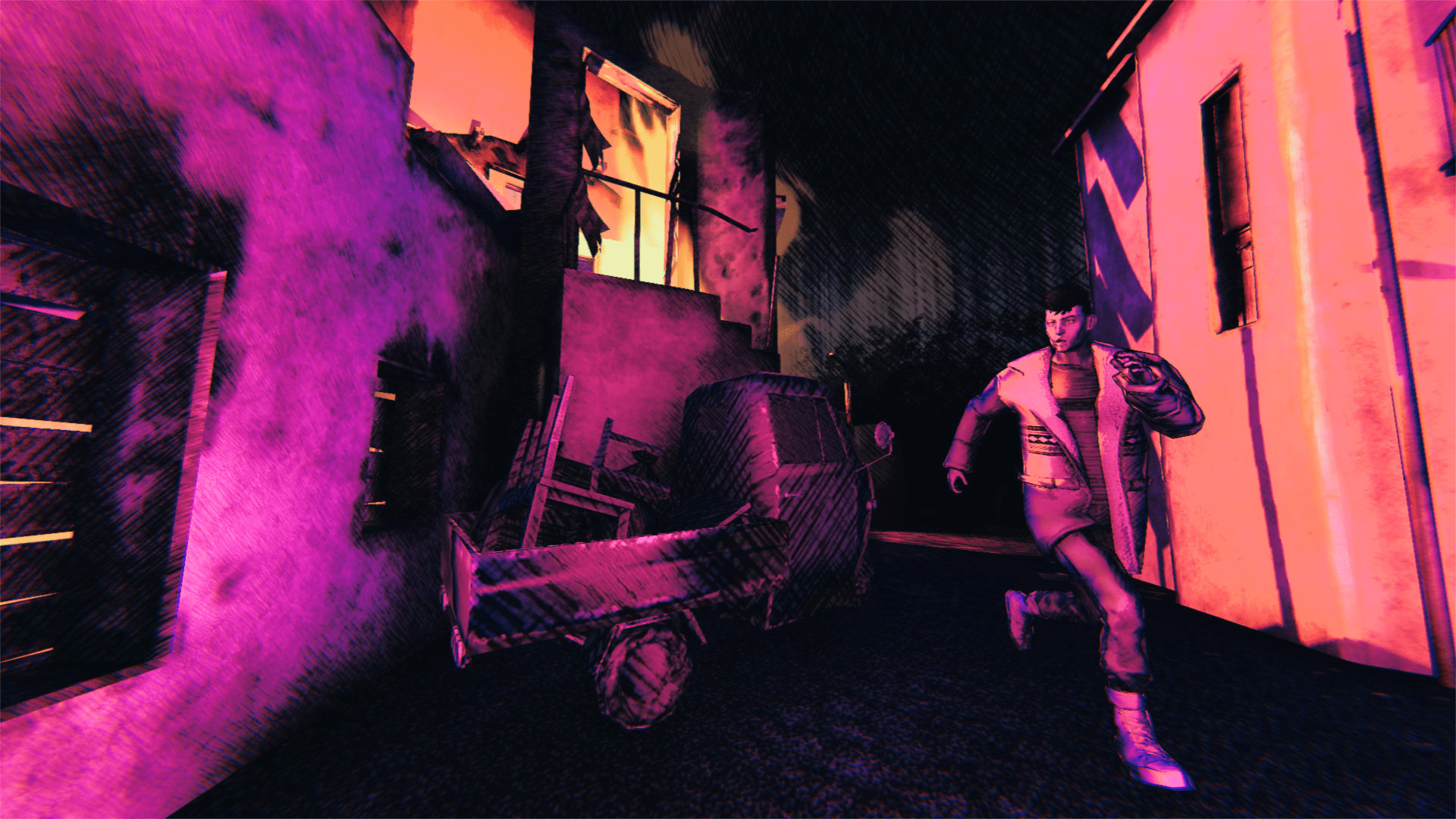
Fear-tuning Your Experience
Before wrapping up my admittedly raving review, I want to give some props to Santa Ragione and Big Trouble Game Studio for the amount of thought and care that’s gone into crafting this video game.
For scarebabies who want to dive into the twisted story and awesome art direction but can’t handle cultist ritual terror experiences, they’ve got you covered. On the flip side, if you have a hankering for creepy, disturbing and outright masochistic difficulty in your horror, you’ll be well catered for.
Saturnalia has a variety of difficulty presets which vary from easy (no village changes upon death, less aggressive creature AI) to standard and flat out ballistic. Honestly, the hardest difficulties remove the quest page altogether, eliminate the interactive maps in the village that guide you to locations and even have permadeath. If you want to give yourself traumatic nightmares from 4 hours of progress being lost after already soiling your pants getting killed by a terrifying demonic void of death, be my guest.
If none of those appeal, you can use the custom sliders to change any variable from unlimited sprint and matches to removing the roguelike element, though I’d desperately implore you not to, as it’s a core reason Saturnalia is so, so good.
Overall though, Saturnalia works so effectively because all of its unique aspects coalesce into a beautifully sadistic whole. The story encourages you to explore despite your fear of having to hide from the creature. The visual direction provides immersive cues to your location and your presence to the creature. The sound design perfectly encapsulates the sense of dread the mines or roguelike revolving town is attempting to create.
As a collective jigsaw comprised of so many differing pieces, Saturnalia comes together into a phenomenal picture.
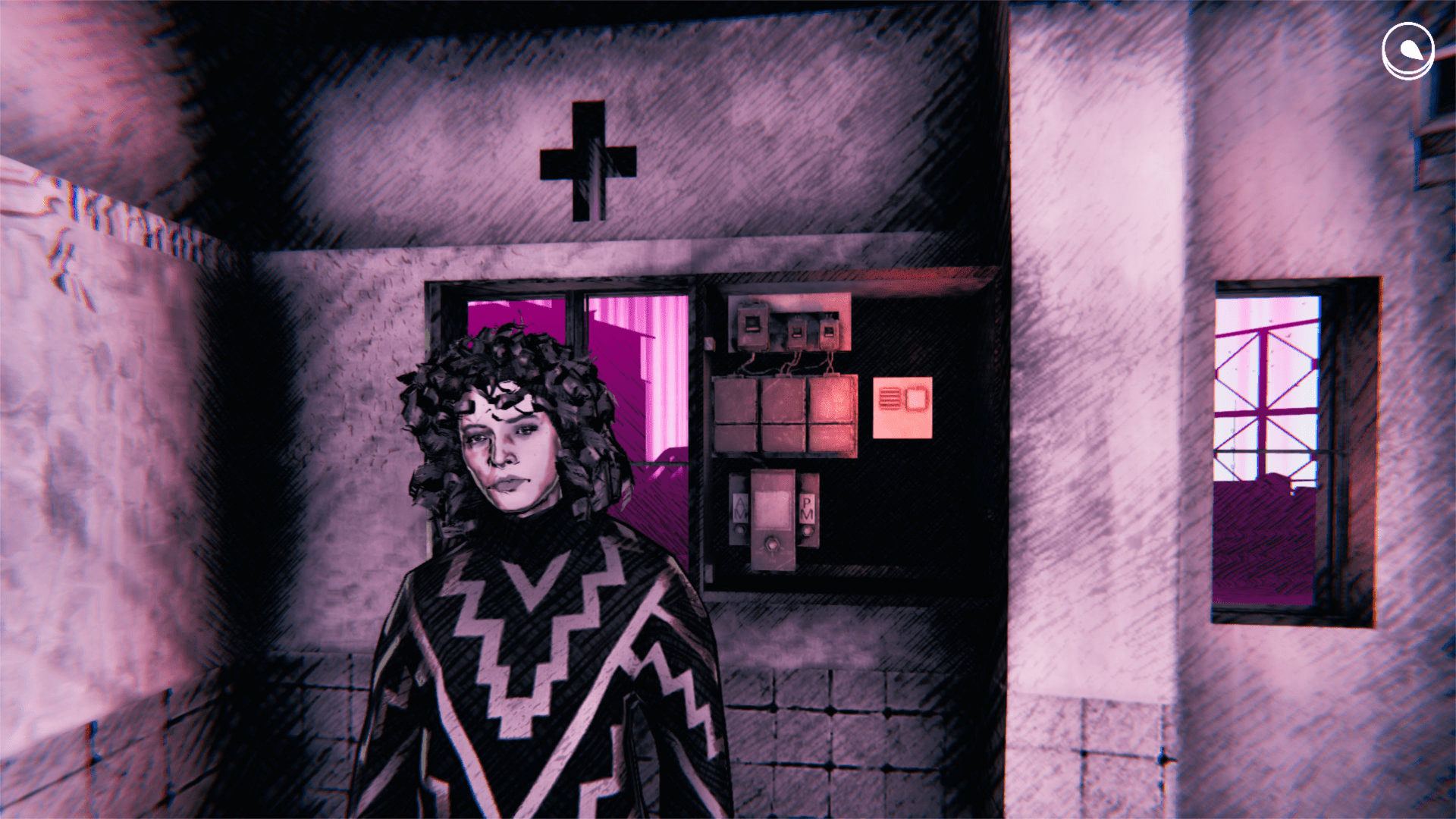
Rite Of Passage
In summing up my thoughts on Saturnalia, I have to acknowledge the obvious: not everyone will necessarily click with this game as it has done with me. Some may find the collect-a-thon nature of the game less interesting or the lack of means to fight the creature depreciating.
I didn’t. I found almost every mechanic and design decision to be worthy of merit. I rarely replay games anymore, especially horror titles where the thrill is eradicated on a second all-knowing run. But I played Saturnalia 3 times through and started a 4th.
It’s few minor issues with the occasional graphical hiccup or one occasion of a slightly obtuse quest objective paled in comparison to the end result of this perfectly executed, horrific ritual. The roguelike elements add a new dimension to typical horror game design, while the story and art style add to its unique personality against the avalanche of other horror games.
If it wasn’t for Neon White, Saturnalia would be a strong contender for my game of the year. It’s become one of my favourite horror games and I implore any horror fan to take a trip into this disturbed, terrifying and brilliantly executed village of madness. Kudos to Santa Ragione and Big Trouble Game Studio for crafting such a masterful experience.
Saturnalia should be on any horror fan’s radar this year. A twisted story combined with a superb art style, nerve-shredding gameplay and expertly crafted design will have you praising and cursing the creative genius to put roguelike mechanics into a horror game. This Italian town has a horrific history you’ll both love and hate to venture into, but you’ll be compelled to uncover it nonetheless.

Saturnalia is available October 27th on PC via Epic Games Store (review platform), PS4/5, Xbox Series S/X, Xbox One and Nintendo Switch.
Developer: Santa Ragione
Publisher: Santa Ragione
Disclaimer: In order to complete this review, we were provided with a promotional code from the publisher. For our full review policy, please go here.
If you enjoyed this article or any more of our content, please consider our Patreon.
Make sure to follow Finger Guns on our social channels. Twitter, Facebook, Twitch, Spotify or Apple Podcasts – to keep up to date on our news, reviews and features.
